The Places in America Where Small Businesses Are Thriving
Small businesses are a big deal in America — and their share of the economic landscape is expanding.
Companies with fewer than 500 employees have created more than 70% of new jobs since 2019, according to the Treasury, and now account for 51% of private employment in America. In 2024, there are 50% more new business applications per month than in 2019. There are more self-employed women than ever and near-record highs of Black, Asian and Hispanic entrepreneurs.
“Every time someone starts a new small business, it’s an act of hope and confidence in our economy,” says President Joe Biden, while the press has credited the Biden-Harris Administration’s Investing in America Agenda for this bold moment in American entrepreneurship.
But if new businesses are a sign of confidence, then confidence varies significantly from one part of the country to another — as OnDeck’s new study into the number of new small businesses in each state, county and metropolitan area demonstrates.
What We Did
We used Small Business Data from the U.S. Census to identify the states, metropolitan areas and counties across America with the highest percentage growth in the number of businesses with fewer than 500 employees according to the latest available figures (2020–2021).
Key Findings
- Idaho is the state where small businesses are growing the fastest, with a +6.55% increase year-on-year.
- The metropolitan area with the greatest increase in small businesses year on year is LaGrange, Georgia (+19.85%).
- Sheridan County, Wyoming, is the county where small businesses are thriving the most (+21.51% year-on-year).
Idaho is the State with the Biggest Small Business Growth
We found that Idaho saw an increase in 2,776 small businesses between 2020–21, an increase of 6.55% — making it America’s healthiest state for small businesses. This followed a quarter-century growth trend in which small business employment grew by 48.7%, exceeding the national rate, according to the U.S. Small Business Administration.
Idaho has the eighth lowest labor costs. The state benefits from a moderate employment market where people have money to spend, but there is enough job competition for Idaho’s small businesses to avoid the recruitment nightmares other regions have faced in recent years.
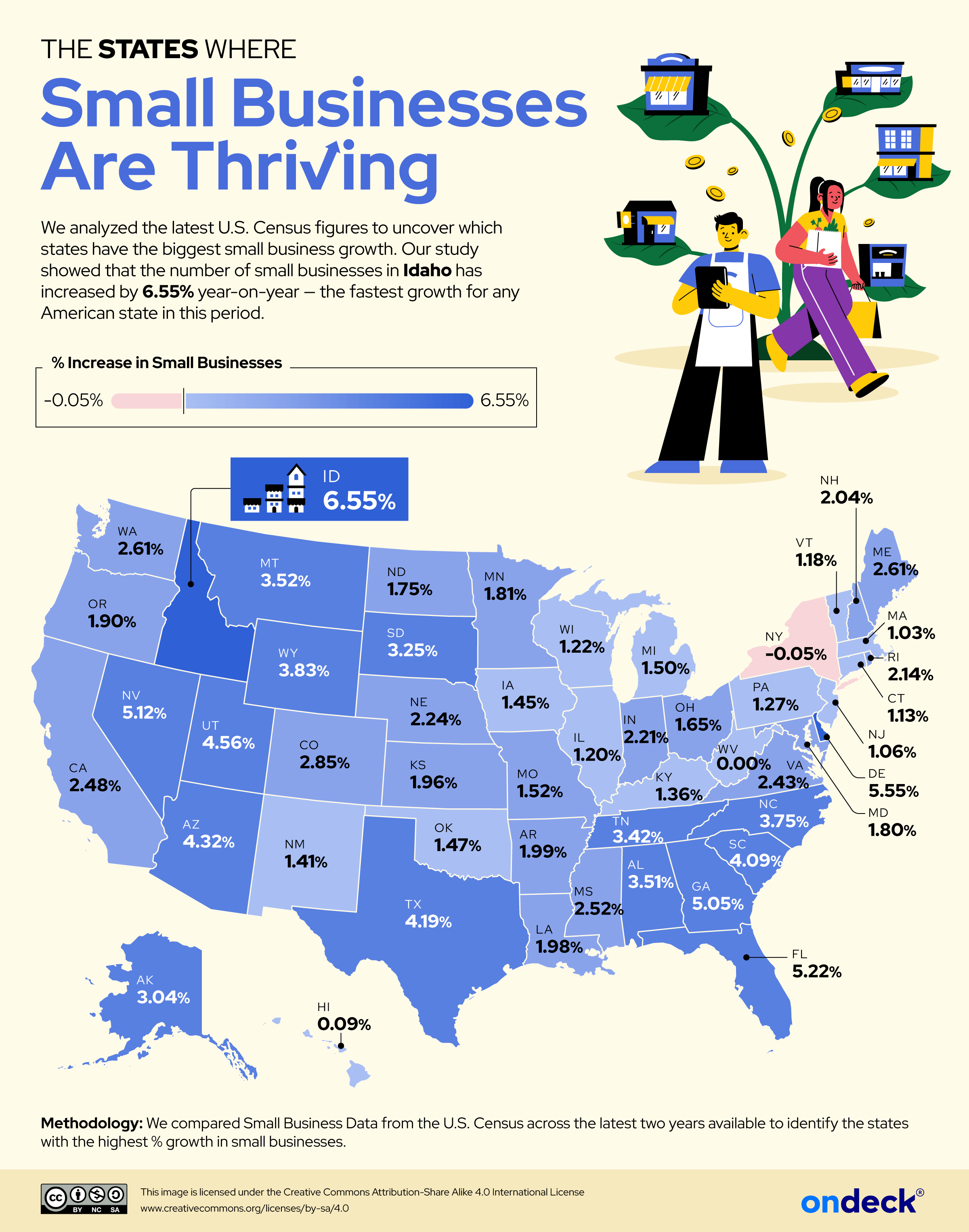
At the other end of the scale, we found that West Virginia has precisely 0.00% growth in small businesses and that there are actually -0.05% fewer small businesses in the state of New York year-on-year. The population of New York State fell at a faster rate than anywhere else during the study period, affecting both the labor pool and the number of emergent college graduates.
“Going forward, what we really want to focus on and should be focused on in the state is really affordability and cost of doing business in New York – all things that Albany can and should get a handle on,” Ashley Ranslow, New York Director of the National Federation of Independent Business (NFIB), said recently. “And how do we make sure that we’re keeping the lights on. And how do we make sure that we are doing everything that can to keep Main Street alive?”
Florida Metros Show the Biggest Small Business Growth Among Cities
Next, we measured the growth in the number of small businesses in large, medium and small metropolitan areas, respectively. There are four Florida areas among the top ten large metros and five Florida areas among the top ten medium metros. Alabama is best represented among the small metros, with four top ten metropolitan areas.
The large metropolitan area where small businesses are thriving the most is Orlando-Kissimmee-Sanford, with a 6.20% rise in the number of firms year-on-year (above).
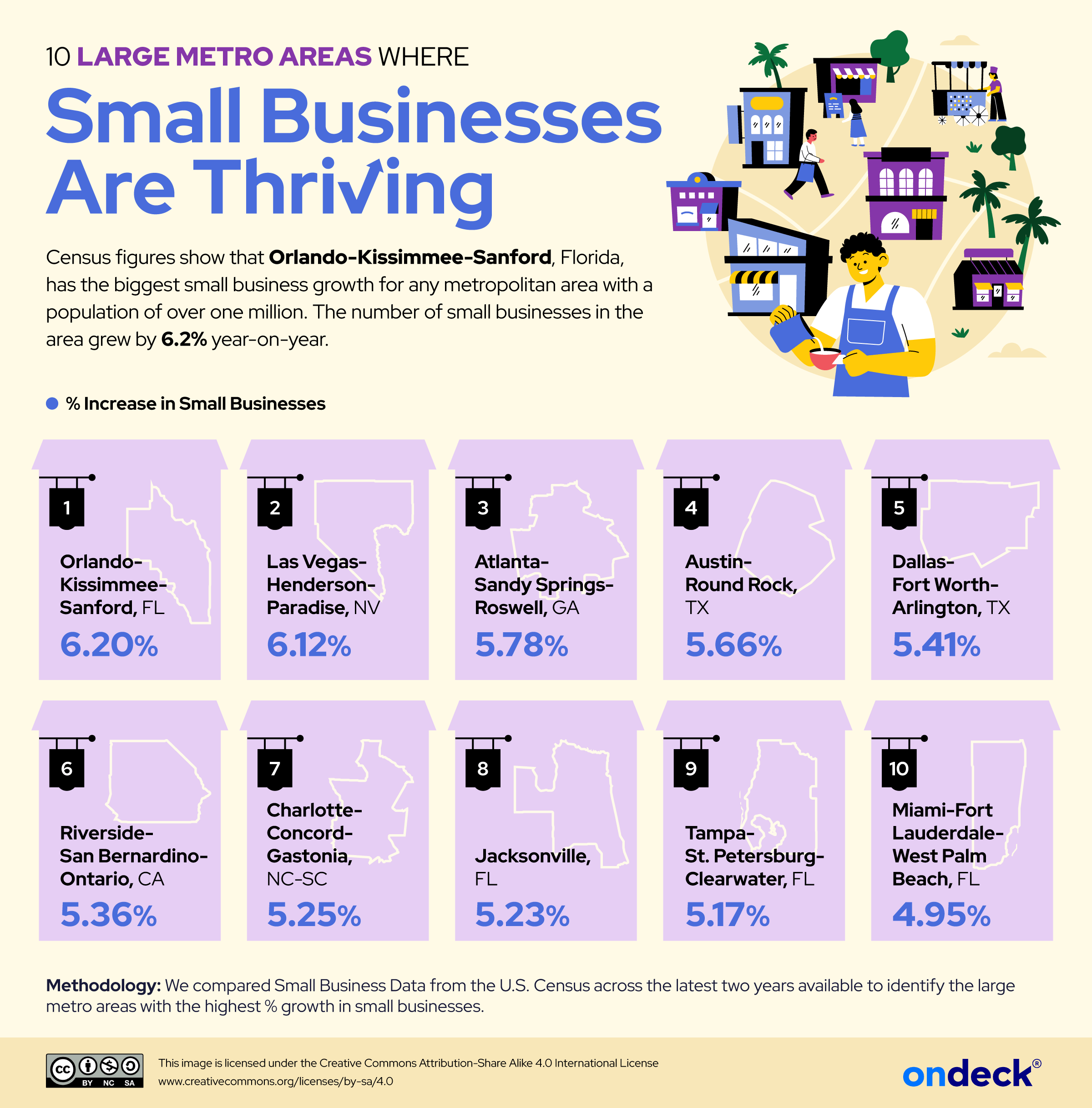
Orlando is recognized for incentive programs that both attract and retain small businesses. One such incentive, Orlando Main Streets, has created 11,000 new jobs and more than 1,800 new businesses since 2008. Some 68% of Central Florida business owners report that “current performance is either excellent or meeting their expectations.”
A Central Florida metro is also the second healthiest for small business growth among medium-sized metros: Lakeland-Winter Haven (6.59%).
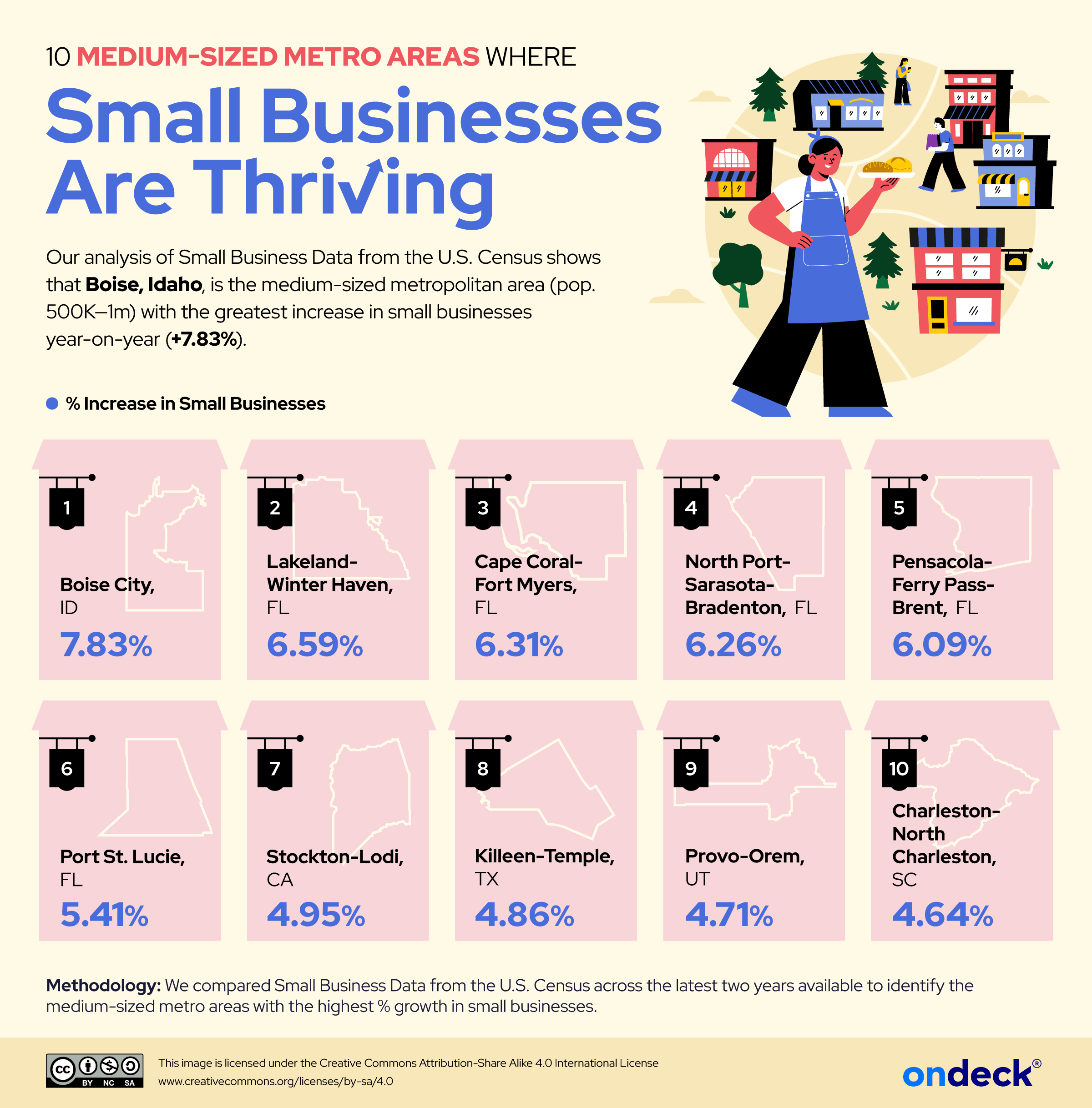
Lakeland has seen a population boom in recent years, particularly among 35–45-year-olds, leading to demand for childcare businesses and service industry startups. “The growth that we have seen is that people are moving here and bringing their business ideas with them,” says Lakeland Chamber CEO Amy Wiggins. Lakeland-Winter Haven (6.59%) is second only to Boise City, Idaho, where there was a 7.83% increase in small businesses year-on-year.
LaGrange in Georgia is the small metropolitan area with the fastest growth in new small businesses. The number increased from 1,098 to 1,316 year-on-year, a remarkable increase of 19.85%. The Georgia International Business Park opened in LaGrange in 2018 and is America’s fourth-largest business park. The park has attracted Fortune 500 businesses, international companies, and smaller local businesses — all of which have stimulated growth in local ancillary industries.
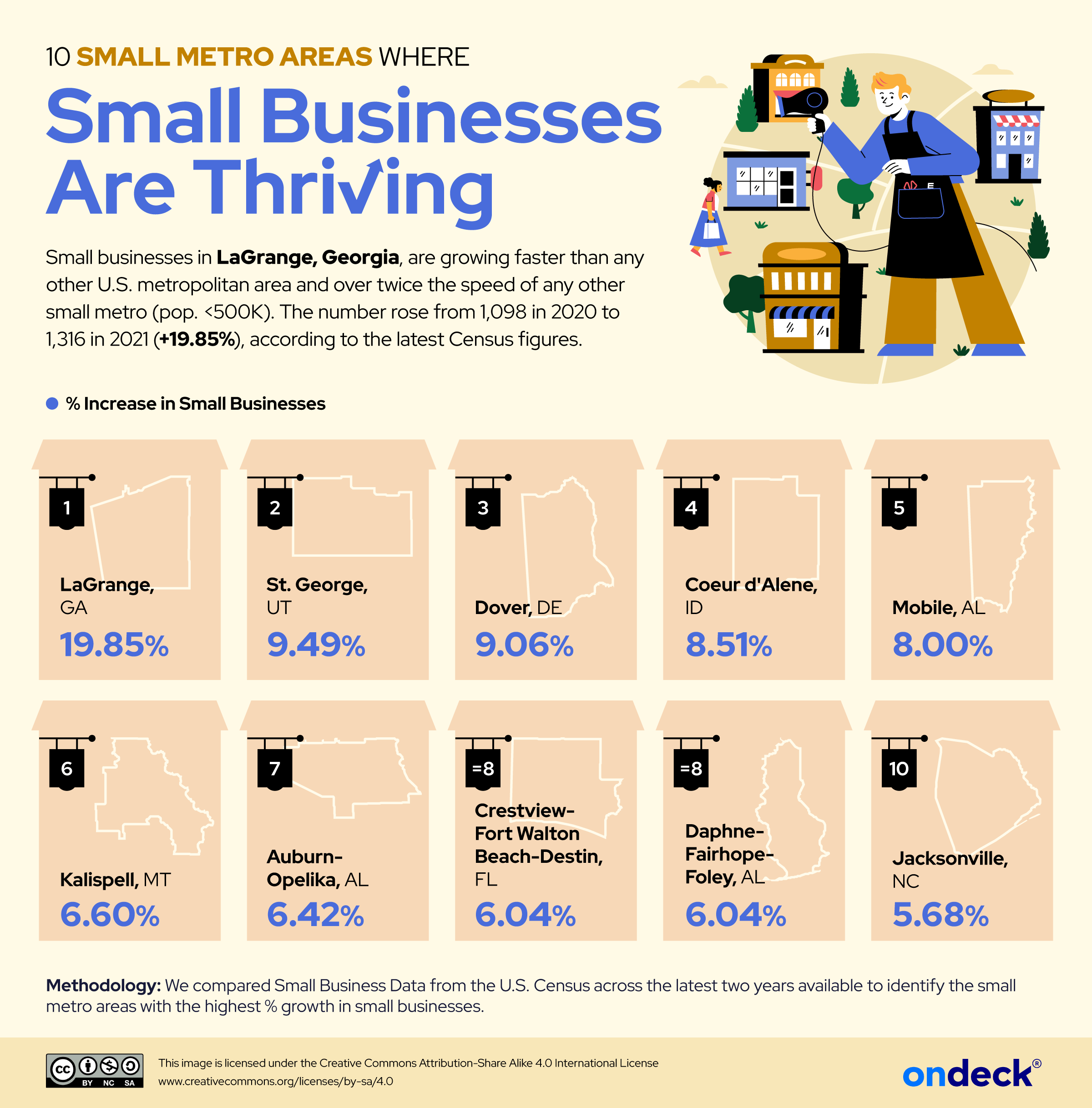
“As a child, I would take old computers apart and reassemble them,” says Brent Hester, owner of a small LaGrange firm specializing in managed IT services for small to medium businesses. “Fast forward 30 years and now I am a proud owner of a Technology and Security Firm in my hometown. I am helping local residents and businesses. What could be better? I’m literally living my dream.”
Sheridan County in Wyoming is the County with the Biggest Small Business Growth
Finally, we identified the counties across the U.S. and each state thriving the most. The top ten are concentrated across Southeastern states, with three counties in Georgia, three in Mississippi and two in Tennessee. However, the area with the highest growth in our whole study is the county of Sheridan in Wyoming, which has seen 21.51% growth in the number of small businesses year-on-year.
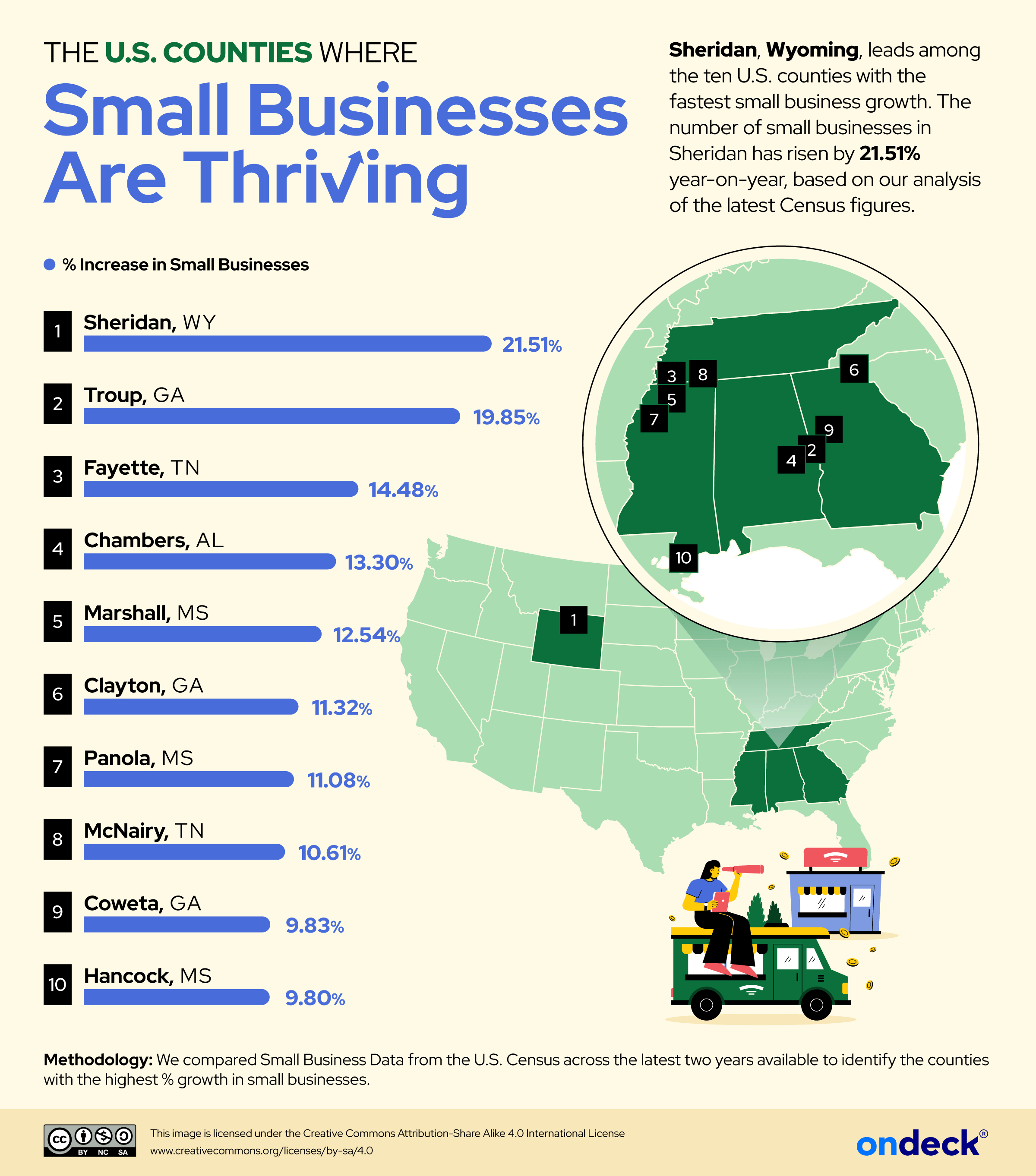
The discovery of rare earth elements in the Sheridan County coal mine is among big developments driving growth in the county. At the same time, workforce initiatives at Sheridan College play some role in countering an exodus of young talent from the region.
However, with growth comes pressure on the housing stock and the political infrastructure. In some parts of the region, locals believe that too much growth threatens the very fabric of the community. “We want to remain an agricultural community with growth that we want to be smart growth,” says Michelle Junkins, Adams Township Trustee.
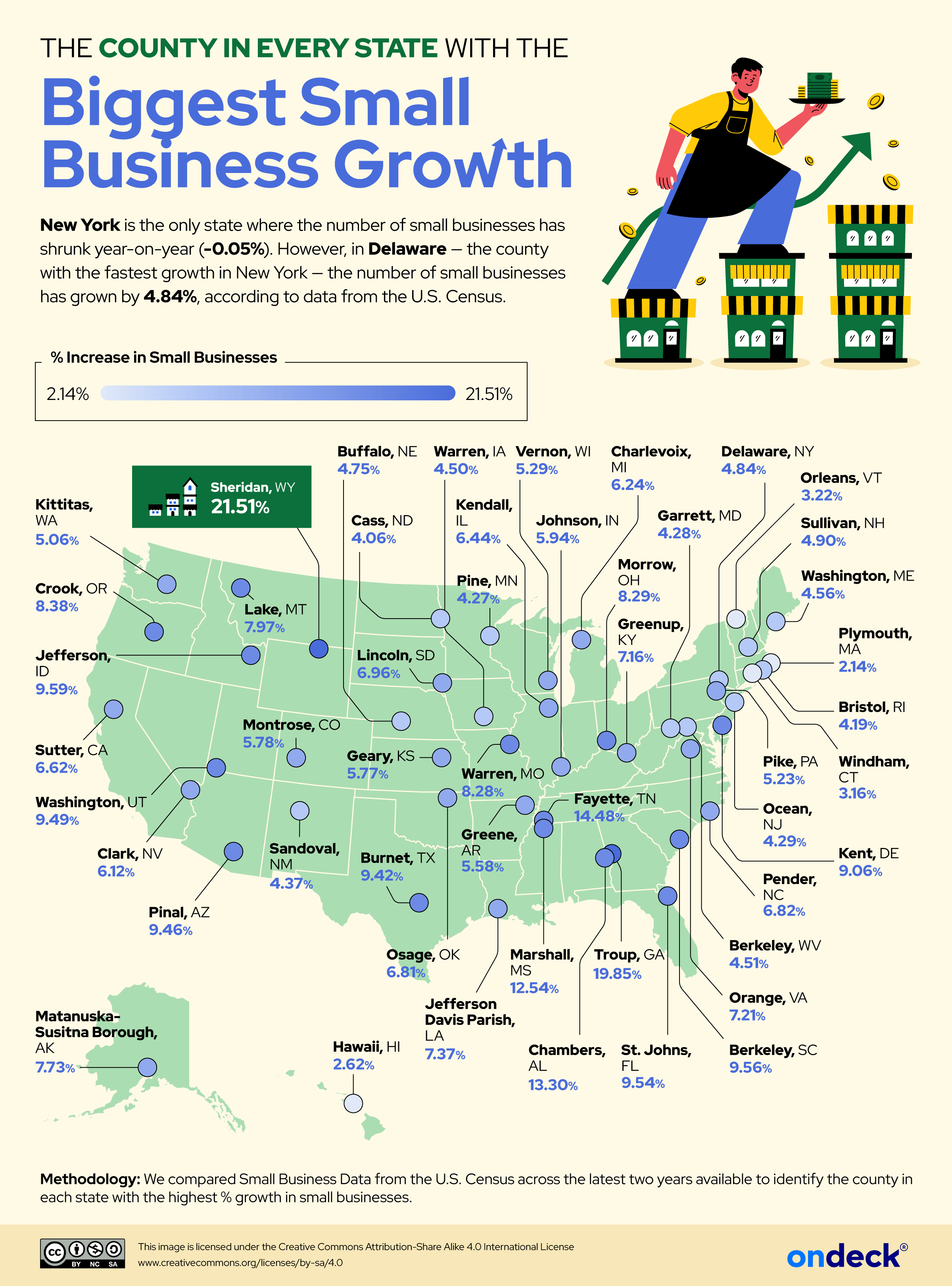
While we found that small businesses are in decline across the state of New York (see The States with the Biggest Small Business Growth, above), there are areas of growth — most notably, in Delaware County, where the number of small businesses is up by 4.84%. One Delaware business development program, Equitable Entrepreneurial Ecosystem for Business Growth (E3), launched in 2020 — around the time of our data set — and is intended precisely to help small businesses grow.
“It’s a formal process, but it’s very customizable, and it’s custom to your business,” says Stephanie Johnnie, executive director of the Pete du Pont Foundation, which created the program. “We work with businesses throughout any stage of their journey from the startup stage to the emerging stage to the accelerated stage and across all industries.”
Invest and Grow
Healthy small businesses make for a healthy America, and plans are afoot to make it easier to start and nurture a small business to success. “This is one of my singular priorities, is to invest and grow our small business,” says Vice President Kamala Harris, pledging to improve tax deductions and remove red tape for the establishment of smaller businesses. Whether such proposals will level the playing field for more even growth across the U.S. remains to be seen.
Methodology
We analyzed the latest available Small Business Data from the U.S. Census across states, metropolitan areas and counties to identify the places across America with the highest % growth in small businesses by comparing the last two years available (2020 and 2021).
In this data set, a small business is defined as a company with fewer than 500 employees. This study was completed in October 2024.
DISCLAIMER: This content is for informational purposes only. OnDeck and its affiliates do not provide financial, legal, tax or accounting advice.



